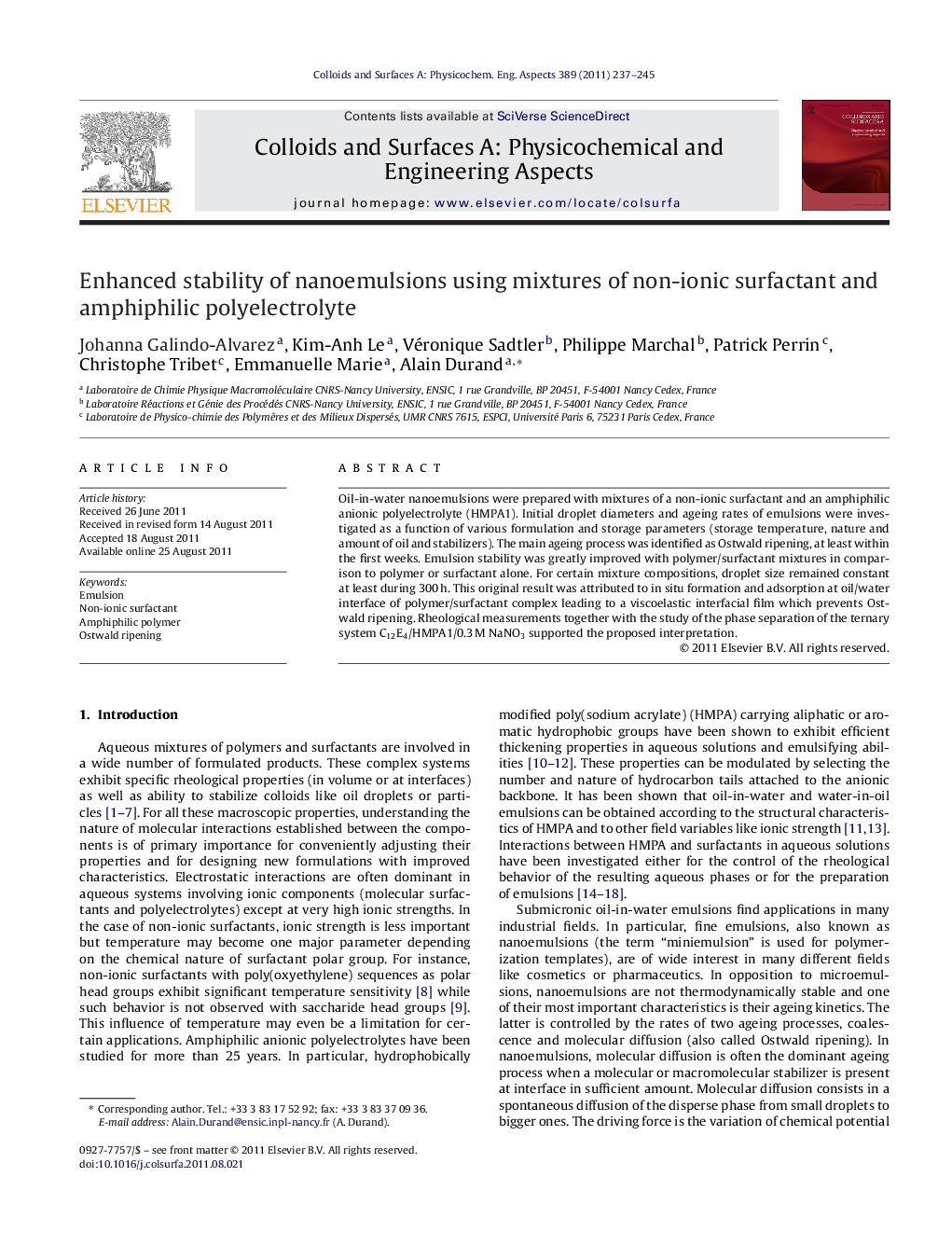| Article ID | Journal | Published Year | Pages | File Type |
|---|---|---|---|---|
| 594555 | Colloids and Surfaces A: Physicochemical and Engineering Aspects | 2011 | 9 Pages |
Oil-in-water nanoemulsions were prepared with mixtures of a non-ionic surfactant and an amphiphilic anionic polyelectrolyte (HMPA1). Initial droplet diameters and ageing rates of emulsions were investigated as a function of various formulation and storage parameters (storage temperature, nature and amount of oil and stabilizers). The main ageing process was identified as Ostwald ripening, at least within the first weeks. Emulsion stability was greatly improved with polymer/surfactant mixtures in comparison to polymer or surfactant alone. For certain mixture compositions, droplet size remained constant at least during 300 h. This original result was attributed to in situ formation and adsorption at oil/water interface of polymer/surfactant complex leading to a viscoelastic interfacial film which prevents Ostwald ripening. Rheological measurements together with the study of the phase separation of the ternary system C12E4/HMPA1/0.3 M NaNO3 supported the proposed interpretation.
Graphical abstractFigure optionsDownload full-size imageDownload as PowerPoint slideHighlights► Nanoemulsions were prepared using mixtures of C12E4 and amphiphilic polyelectrolyte. ► Strongly enhanced stability of nanoemulsion was observed with certain mixtures. ► An interpretation is proposed based on formation of polymer/surfactant coacervates which exhibit strong viscoelastic properties.
